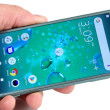Review: Apple iPhone 6 for Verizon Wireless
Editor's Note: Since the 6 runs the exact same operating system as the 6 Plus, much of the below text has been copied from Phone Scoop's review of the 6 Plus. Rest assured, we tested every function of the 6 to make sure it behaves in the same way.
Menus
The iPhone 6 runs iOS 8. We've reviewed all the new features in iOS 8 in depth here. Here's a shorter recap.
The lock screen has become a much more useful space on iOS over the years. Users can tweak the settings to allow for as much or as little interruption as you want. Notifications can be splashed all over the lock screen, or hidden away for another time. The new extensions allow many more apps and services to offer actionable notifications on the lock screen, such as Skype 5.5, which is a nice improvement. There is only one app shortcut, however, and that's to the camera.
The home screens haven't changed at all between iOS 7 and iOS 8 on the 6. Apps are stored in a rigid grid on the home screen panels. The good news is apps can be placed in folders, and you can place as few or as many apps on each home screen as you want. There are no widgets in iOS 8 (at least not like Android), and home screen content is static, not dynamic.
The settings menu hasn't changed at all, really. It is a long list of tools laid out in text with buttons to turn them on or off, or adjustments that require more in-depth tweaking. There are a lot of settings, but they are easy to sort between.
The Notification shade drops the "Missed" tab from iOS 7 and adds compatibility with more apps. Developers can now create widgets that land in the Notification shade and offer new and changing content. It's a half measure, as far as I am concerned. It's nice to have dynamic content *somewhere* outside of apps, but it doesn't match what's available to Android and Windows Phone devices.
Control Center is a really useful tool for adjusting key device settings on the fly. You can access it by swiping up from just about any screen. It includes access to the wireless radios, flashlight, music controls, sharing, and brightness.
iOS 8 ran perfectly on the iPhone 6. I didn't run into any problems, no matter what app I used. I didn't experience any crashes, hangs, or lags. The 6 has a 64-bit A8 processor with Apple's M8 motion coprocessor to help handle all the sensors.
Like the 6 Plus, the iPhone 6 doesn't offer true side-by-side multitasking. It has a fast app switcher, but you can't use two apps at the same time. Some devices in this category (Galaxy S5) do.
The 6 doesn't suffer from the same app optimization problem the 6 Plus does. That means most third-party apps I saw ran well and looked good.
Calls and Contacts
Apple made few changes to the calling and contact apps this time around. New features include support for Wi-Fi Calling and VoLTE. WiFi Calling is already available from T-Mobile and VoLTE is already available from Verizon. I enabled VoLTE on the iPhone 6 and verified that it was active on my account with Verizon. I used the 6 to call several people I know who have the Samsung Galaxy S5, which is also VoLTE capable. Two phones with active VoLTE service should pass calls over the data network rather than the voice network. VoLTE calls are by default in HD Voice. To be quite honest, I couldn't discern any difference in voice quality between what should have been VoLTE calls and normal voice calls. However, it is possible that the VoLTE service didn't actually work. There's no indicator or other signal to tell users that calls are in HD or using VoLTE.
The other big new function is called Continuity. With Continuity enabled, users of the 6 Plus who also happen to have a Mac or iPad operating on the same Wi-Fi network will be able to answer calls on their computer (requires OS X Yosemite) or iPad. This feature worked well on my hardware. I was able to answer and initiate calls from on my iPad - which were actually connected via my iPhone 6. Neat.
The contacts app hasn't really been updated at all as far as I can tell. It's a bit stark, and I wish it had more hooks into social networks and other apps.
Messaging
Apple made huge improvements to its core messaging apps. Email supports new actions that make managing your inbox faster and easier. These tools work well on all iOS 8 devices, not just the 6. For example, you can swipe left or right to see a list of secondary actions for deleting, marking, moving, or flagging your emails. The email app functions in landscape orientation, but it doesn't have the cool extra panel that's available on the 6 Plus. It just shows your messages without the preview pane. I found typing emails works better when in portrait mode, as the keyboard takes up about 40% of the screen when in landscape orientation - making it harder to see your entire message.
The 6 also loses the split-panel view in iMessage that's available to the 6 Plus. When you hold the 6 in landscape mode, the texting app shows either a list of conversations or the current conversation rather than both at the same time.
The messaging app gains some new multimedia functions. It's now a snap to send video and audio snippets, as well as attach selfies. The audio tool, for example, requires a press-hold-swipe gesture that initiates the recording and then sends it automatically.
Apple made significant changes to the keyboard app in iOS 8 that make it much better. The keyboard has a new word-prediction engine. As you type, several words will appear in a line above the keyboard itself. I was often able to compose entire responses using these suggestions. The keyboard also adds emoji for enhancing messages and conversations. Typing messages on the 6 was a pleasure thanks to the wider screen (when compared to iPhone 5/5s). I felt my thumbs had much more room for typing, and Apple's spelling- and word-prediction engines helped me ramp up my typing speeds. iOS 8 adds support for third-party keyboards, too.
Ostensibly, iOS 8's new support for extensions (hooks for developers to connect apps) will improve how iPhone owners are able to share content with other apps/people - including via the email and messaging apps.
FaceTime is still FaceTime.


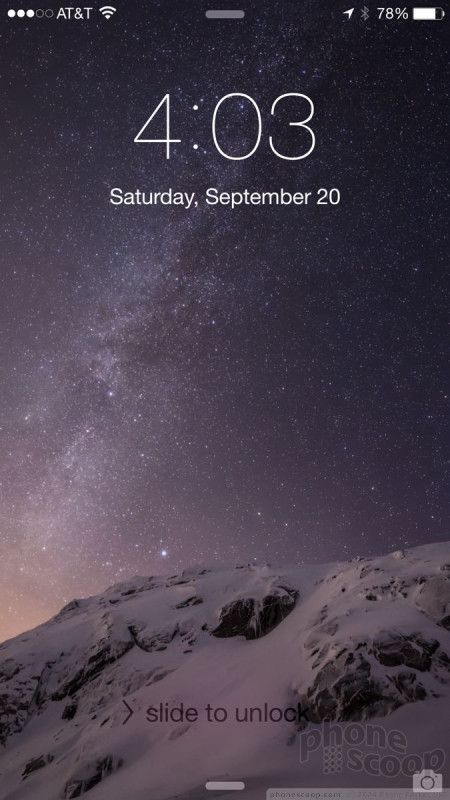








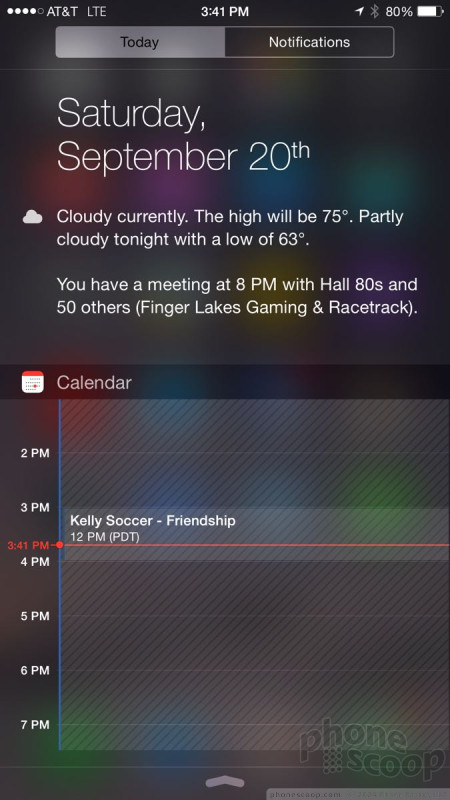




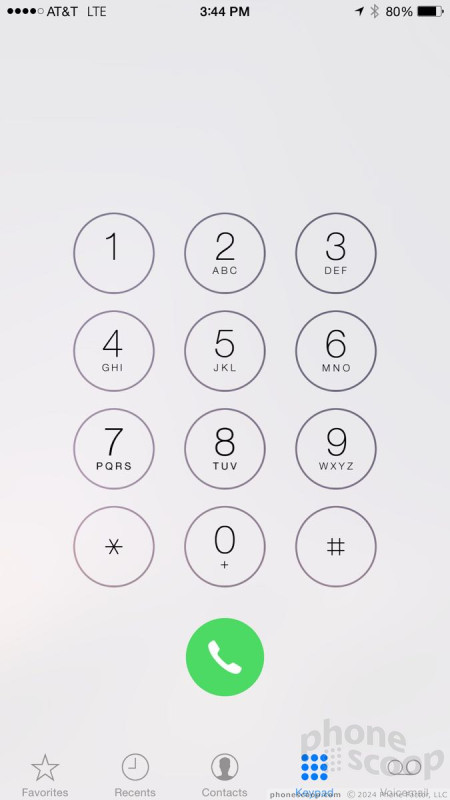




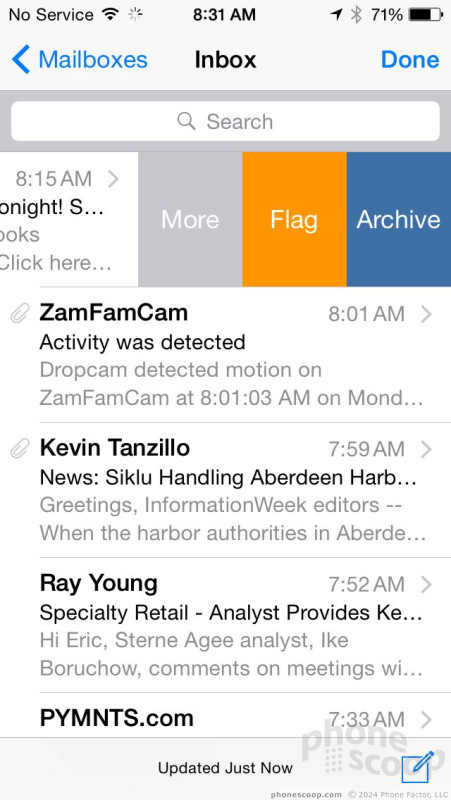
















 Review: Otterbox Universe and Olloclip 4-in-1
Review: Otterbox Universe and Olloclip 4-in-1
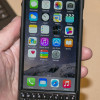 Hands-On: Typo 2 Keyboard
Hands-On: Typo 2 Keyboard
 ReSound Smart Hearing Aid Connects To Your Phone
ReSound Smart Hearing Aid Connects To Your Phone
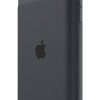 Apple-Made iPhone 6 Battery Pack Graces Apple Store
Apple-Made iPhone 6 Battery Pack Graces Apple Store
 Twitter's Periscope App Powers Live Video Streaming
Twitter's Periscope App Powers Live Video Streaming
 Apple iPhone 6
Apple iPhone 6



